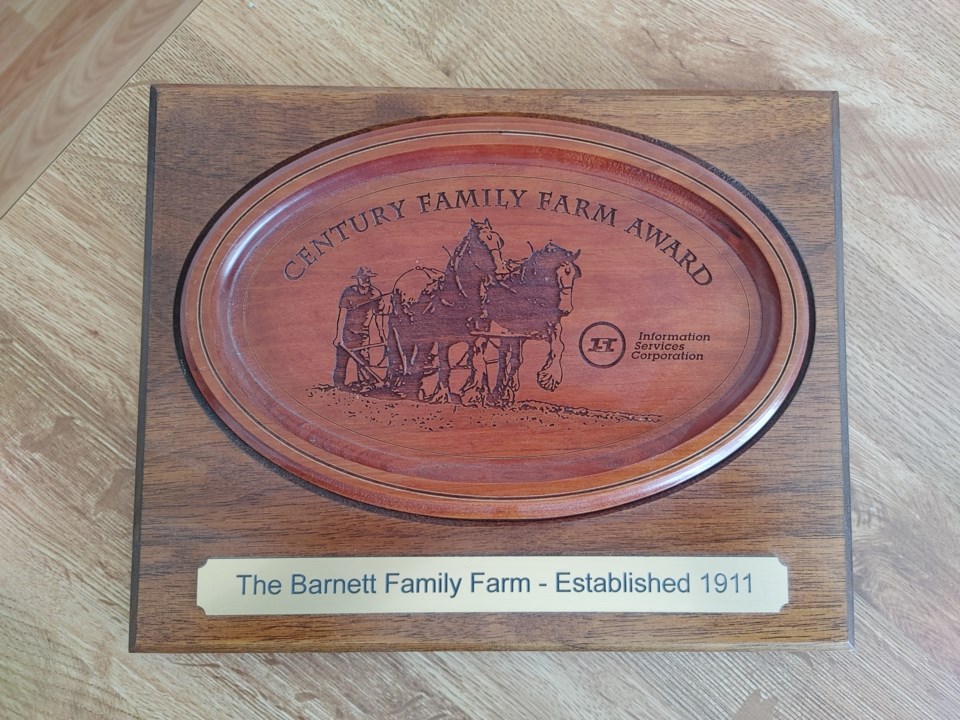UNITY – Even before settlements found their way across the country, the farming industry has been around for centuries. Many farmers came to the new country with a renewed sense of hope. Many were faced with disease, overcrowding, unemployment and famine. Without any knowledge of how life would turn out, they boarded a ship, leaving their life as it was. For some families, it was the fresh start they needed.
On a local scale, many settlers were granted homesteading rights, as long as some work was done. Once the land was broken, they were allowed to build a home, grow crops and raise animals. This was just the beginning for many families living there today, over 100 years later.
Century farms have been recognized for a while now by the Government of Saskatchewan and many of those farms are still in production today. It is common to see some third-generation farms in the area but to see it go past that is rarer. This is one story of a fourth-generation farm in the Unity area.
Janet Schmidtz nee Barnett was raised in the Seagram Valley, located northwest of Unity. Her grandfather, Edward Beeching Barnett homesteaded on May 11, 1911. He was supposed to break up the majority of the land, however the discovery of a spring running through the section limited him to breaking up only 159 of the required acres. Due to this discovery, he was allowed to purchase the land as a pre-emption. Like many other homesteaders, Edward had faced some challenges, including building a reliable water well.
Edward farmed until his health was becoming affected. He moved to British Columbia, handing the farm over to his son Jim upon his arrival back from the Second World War in 1947. Jim had brought home Muriel and together they continued with the farm. Hard red spring wheat and oats were the most common grains that the Barnetts continued to grow, along with harvesting brome grass for the seed.
“Because most of the prairie soil was broken up for growing crops, some farmers wanted the brome grass to create pastures, so that was one of the biggest commodities they grew back then,” said Schmidtz.
For many who farmed in the early 1950s, the weather was not kind. Drought made things difficult, with lower yields on the grain. Farming became easier with the introduction of machinery such as tractors and the use of pesticides and herbicides. Jim continued to grow many of the same crops as his father, much like other second-generation farmers did. Many of the same farming practices that homesteaders had instilled in their farms were being carried on into the next generation.
After 28 years of farming, Jim’s health started to fail. Janet and her husband, Lionel, went to help.They officially took over in 1975. Like most of their neighbours, Jim and Muriel moved to Unity and enjoyed their retirement.
Lionel and Janet soon had their own family and continued with farm life. Cattle and grain kept them all busy, as well as all the extra-curricular activities their children joined.
When Lionel and Janet decided to retire from farming, they were uncertain if any of their children would take on the year-round job. There were thoughts of selling until their two younger sons, Christopher and Patrick, stepped in to take over the day-to-day operations. Both parents still helped where they could but were limited by health problems. Once their youngest son, Patrick, started his own family, a move to Unity was made, leaving Christopher running the operation.
Janet is not the only one who has seen how the technology has improved in the fields. She always knew that the century farm could be a success if someone was willing to work at it. She is glad that Christopher and his partner, Jessica, are happy to work the land. Although her grandchildren are young \, she does not foresee the Barnett / Schmidtz farm making it to five generations. However, for some farms, there is still hope that a future generation will continue the family legacy.




